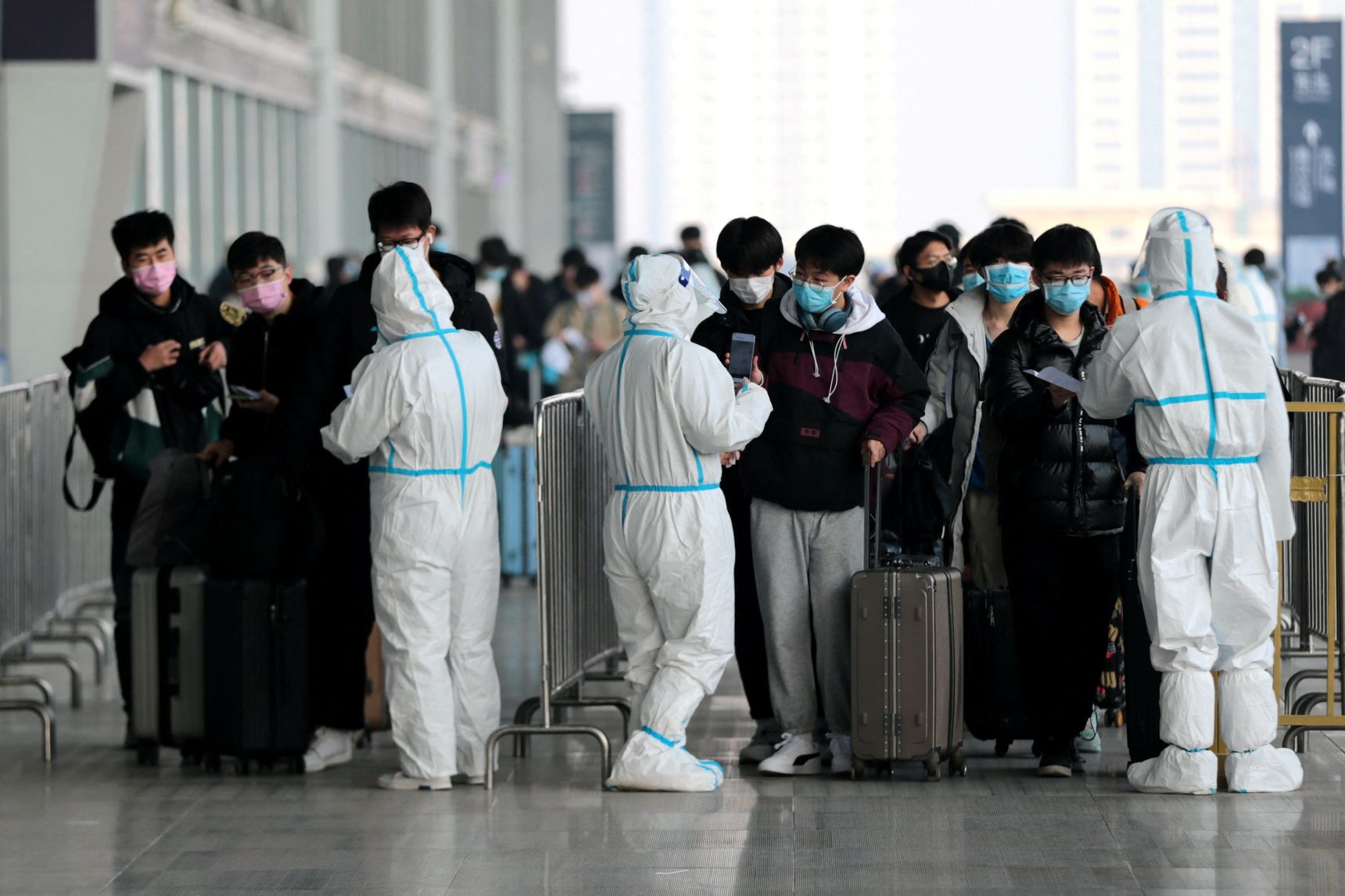Why China’s Central Bankers Are Still Worried
China’s economy grew 4% from a year earlier in the fourth quarter—faster than expected.
After a tumultuous 2021 marked by near-disaster in the property sector and a widening crackdown on other previously fast-growing industries such as internet technology, China’s economy demonstrated a bit of spark Monday. New figures showed fourth-quarter growth at 4% year over year, slower than the third quarter’s 4.9% but still well above the 3.3% consensus estimate among economists polled by FactSet.
Still, policy makers clearly don’t see much to celebrate: On Monday the People’s Bank of China also announced a 0.1 percentage point cut to two of its key policy rates.
The upbeat data shouldn’t be so surprising, particularly for October and November. Although China’s economy still struggled in the fourth quarter, it benefited from the absence of two big problems from the third quarter: the midsummer Delta variant outbreak and late summer power shortages. Resilient exports supported manufacturing investment, and the slow trickle of monetary easing since July appears to have helped stabilize weak infrastructure investment.
Single-month December data released alongside gross domestic product was largely bad, however, particularly for consumers and the all-important housing sector. Retail sales rose just 1.7% year over year, the weakest growth in over a year. And with China still fighting multiple Covid-19 outbreaks in mid-January—including some linked to the hyper-contagious Omicron variant—the prospects for January and February look bleak too.
More worrying, mortgage lending appears to have retreated in December, after a noticeable bump in November: Growth in seasonally adjusted medium- and long-term loans to households slowed to 9.5% from 14.3% month on month annualized, according to Goldman Sachs. Housing sales also fell back. With infrastructure investment still struggling to accelerate and consumers hunkering down, it is difficult to imagine a floor for overall Chinese growth without more definitive signs of a bottom in real estate.
Even after today’s modest policy rate cuts, monetary easing so far still looks conservative compared with past cycles—and many market rates are still relatively high. More help will be needed to head off a deeper slowdown in the first half of 2022.
Reprinted by permission of The Wall Street Journal, Copyright 2021 Dow Jones & Company. Inc. All Rights Reserved Worldwide. Original date of publication: January 17, 2022.
 Copyright 2020, Dow Jones & Company, Inc. All Rights Reserved Worldwide. LEARN MORE
Copyright 2020, Dow Jones & Company, Inc. All Rights Reserved Worldwide. LEARN MORE
This stylish family home combines a classic palette and finishes with a flexible floorplan
Just 55 minutes from Sydney, make this your creative getaway located in the majestic Hawkesbury region.
Continued stagflation and cost of living pressures are causing couples to think twice about starting a family, new data has revealed, with long term impacts expected
Australia is in the midst of a ‘baby recession’ with preliminary estimates showing the number of births in 2023 fell by more than four percent to the lowest level since 2006, according to KPMG. The consultancy firm says this reflects the impact of cost-of-living pressures on the feasibility of younger Australians starting a family.
KPMG estimates that 289,100 babies were born in 2023. This compares to 300,684 babies in 2022 and 309,996 in 2021, according to the Australian Bureau of Statistics (ABS). KPMG urban economist Terry Rawnsley said weak economic growth often leads to a reduced number of births. In 2023, ABS data shows gross domestic product (GDP) fell to 1.5 percent. Despite the population growing by 2.5 percent in 2023, GDP on a per capita basis went into negative territory, down one percent over the 12 months.
“Birth rates provide insight into long-term population growth as well as the current confidence of Australian families,” said Mr Rawnsley. “We haven’t seen such a sharp drop in births in Australia since the period of economic stagflation in the 1970s, which coincided with the initial widespread adoption of the contraceptive pill.”
Mr Rawnsley said many Australian couples delayed starting a family while the pandemic played out in 2020. The number of births fell from 305,832 in 2019 to 294,369 in 2020. Then in 2021, strong employment and vast amounts of stimulus money, along with high household savings due to lockdowns, gave couples better financial means to have a baby. This led to a rebound in births.
However, the re-opening of the global economy in 2022 led to soaring inflation. By the start of 2023, the Australian consumer price index (CPI) had risen to its highest level since 1990 at 7.8 percent per annum. By that stage, the Reserve Bank had already commenced an aggressive rate-hiking strategy to fight inflation and had raised the cash rate every month between May and December 2022.
Five more rate hikes during 2023 put further pressure on couples with mortgages and put the brakes on family formation. “This combination of the pandemic and rapid economic changes explains the spike and subsequent sharp decline in birth rates we have observed over the past four years,” Mr Rawnsley said.
The impact of high costs of living on couples’ decision to have a baby is highlighted in births data for the capital cities. KPMG estimates there were 60,860 births in Sydney in 2023, down 8.6 percent from 2019. There were 56,270 births in Melbourne, down 7.3 percent. In Perth, there were 25,020 births, down 6 percent, while in Brisbane there were 30,250 births, down 4.3 percent. Canberra was the only capital city where there was no fall in the number of births in 2023 compared to 2019.
“CPI growth in Canberra has been slightly subdued compared to that in other major cities, and the economic outlook has remained strong,” Mr Rawnsley said. “This means families have not been hurting as much as those in other capital cities, and in turn, we’ve seen a stabilisation of births in the ACT.”
This stylish family home combines a classic palette and finishes with a flexible floorplan
Just 55 minutes from Sydney, make this your creative getaway located in the majestic Hawkesbury region.






















